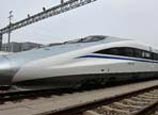
Based on data from recent months, it is now widely accepted that China's economy is losing steam. For instance, HSBC's preliminary China manufacturing purchasing managers' index (PMI) fell to a nine-month low of 48.3 for June, down from a final reading of 49.2 in May and indicating a slowdown in manufacturing activity.
My view is that China is in the midst of a structural slowdown - rather than a cyclical downturn as some have suggested - which cannot be addressed simply with increased infrastructure spending and further monetary loosening.
Backing up this belief is the fact that the Chinese economy has been characterized by insufficient consumer spending for several decades. At roughly 35 percent, China's proportion of consumption relative to GDP is among the lowest in the world, especially compared to other large scale economies. Meanwhile, investment still accounts for nearly 50 percent of the country's GDP.
Many have said that depressed domestic demand is responsible for the lack of private consumption. But such explanations are too superficial. The core reason behind China's tepid consumer demand is its unequal distribution of wealth.
At present, there are severe overcapacity problems present in most of China's manufacturing industries thanks to an over-dependence on investment as a driver of economic growth. China currently holds the highest investment-to-GDP ratio in the world, a distinction which has only made its producers victims of their own excess. From another perspective though, there is a surplus of production capacity relative to the country's weak demand.
The conflict between excess capacity and insufficient purchasing power again points to the country's unbalanced income distribution. While the income of the government and State-owned enterprises (SOEs) as a share of GDP has jumped considerably in recent years, household incomes have been declining, making Chinese people reluctant to spend. This is the so-called guofu minqiang phenomenon - the government and SOEs get richer while the public remains poor - which has not only muffled consumption but also hindered the transition of China's growth model.
It is because of such structural problems that macroeconomic measures have failed to pull the economy out of its current rut. The apparent failure of the last major economic stimulus plan has already proved this point.
In late 2008, the central government introduced a 4-trillion yuan ($650.4 billion) stimulus package intended to sustain growth against the background of the global financial crisis.
Yet, most stimulus funds ended up in the pockets of various State-backed institutions and enterprises, much to the detriment of the private sector and the economy.
The country needs thorough reforms to correct structural problems and lay the foundation for sustainable long-term growth. Right now, China needs - among other things - to introduce market-oriented industry reforms aimed at paring overcapacity, tax reforms which reduce the financial burden on the private sector, and market reforms which open up restricted sectors to private investment.
Creating equitable access to resources and markets will take several years and put a further damper on the economy, but such a process is inevitable if the central government is truly serious about focusing on quality-oriented growth.
















 A growing thirst for water safety
A growing thirst for water safety


![]()
